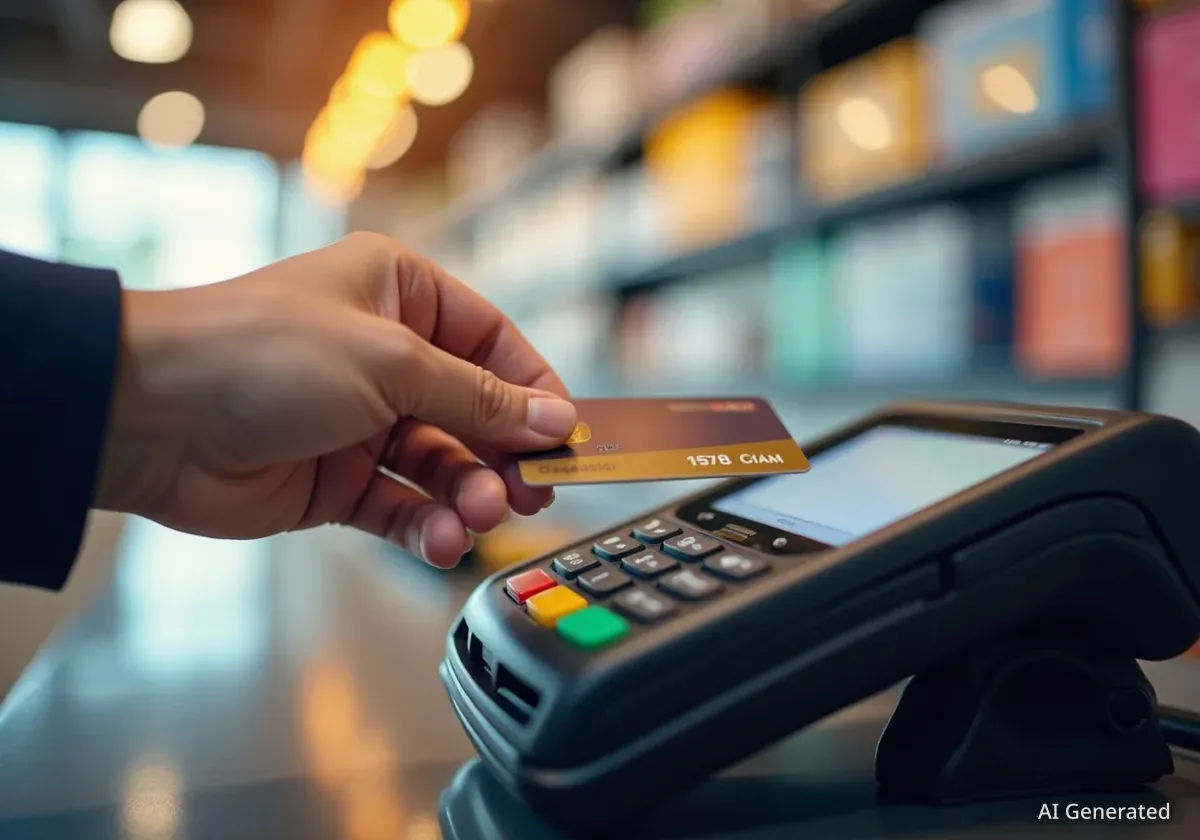Stablecoins offer significant advantages for global payments, such as 24/7 processing and lower costs, but they will not replace established networks like Visa and Mastercard for everyday retail transactions until they incorporate robust consumer protections. According to a leading payment technology executive, features like fraud prevention and transaction dispute resolution are essential for widespread consumer trust and adoption.
Guillaume Poncin, the chief technology officer at payment company Alchemy, stated that consumers are accustomed to the security offered by traditional payment systems. For stablecoins to achieve mainstream acceptance, they must integrate these familiar safeguards. This gap in consumer protection remains a primary hurdle separating the potential of blockchain-based payments from their practical use in daily commerce.
Key Takeaways
- Stablecoins must adopt consumer protection features like chargebacks and fraud prevention to compete with Visa and Mastercard in retail markets.
- Industry experts suggest these protections can be built directly into smart contracts or funded through insurance pools.
- A debate is ongoing within the financial sector and among regulators about the potential impact of stablecoins on traditional banking systems.
- U.S. lawmakers have already taken steps to regulate stablecoin features, such as prohibiting issuers from sharing yield with customers.
The Missing Piece for Retail Adoption
For decades, consumers have relied on the safety nets provided by credit card companies and banks. Features such as the ability to dispute a charge, receive a refund for a fraudulent transaction, or get credit are standard expectations. According to Guillaume Poncin, stablecoin projects must replicate this environment to attract the average person.
He explained that the technology to implement these protections already exists. Consumer safeguards can be embedded directly into the smart contracts that govern stablecoin transactions. This would automate the process of resolving disputes and handling fraud claims, bringing a new level of security to digital currency payments.
"I expect every major payment processor will integrate stablecoins, and every bank will issue its own," Poncin told Cointelegraph. "The future is one where traditional rails are enhanced by blockchain’s efficiency and new use cases."
Poncin also suggested that stablecoin issuers and payment platforms could establish their own insurance funds. These pools would be used to reimburse users in cases of confirmed fraud, mirroring the protection offered by traditional financial institutions.
What Are Stablecoins?
Stablecoins are a type of cryptocurrency designed to maintain a stable value by being pegged to a real-world asset, most commonly a major fiat currency like the U.S. dollar. This stability distinguishes them from volatile cryptocurrencies like Bitcoin and makes them more suitable for payments and transfers.
A Hybrid Future for Payments
While stablecoins face challenges in the domestic retail sector, they have already found significant traction in other areas. Their ability to facilitate near-instant, around-the-clock, cross-border settlements at a low cost gives them a distinct advantage over traditional banking systems for international transactions.
This efficiency makes them particularly useful for:
- Remittances: Sending money internationally to family or friends.
- International Commerce: Businesses paying suppliers or receiving payments from customers overseas.
Poncin envisions a future where the two systems merge. He predicts a hybrid model that combines the instant settlement of blockchain with the trusted consumer protections of legacy payment networks. "For cross-border payments and emerging markets, stablecoins are already winning. For domestic retail, we will see hybrid models combining instant settlement with consumer protections," he said.
Stablecoins vs. Traditional Payments
A key difference lies in settlement time and availability. A bank transfer across borders can take several business days to clear and is restricted by banking hours. A stablecoin transaction can be settled in minutes, at any time of day, any day of the week.
The Debate Over Banking and Regulation
The rise of stablecoins has sparked a significant debate among commercial banks, crypto industry leaders, and government regulators. The central question is how these digital currencies will affect the established financial system. Some view them as a threat to traditional banking, while others see them as a complementary technology.
In March, this tension was evident during the U.S. Senate's debate over the Guiding and Establishing National Innovation for US Stablecoins (GENIUS) bill. Banks and their political allies expressed concerns about certain provisions, leading to significant changes in the proposed legislation.
The Yield-Sharing Controversy
A major point of contention was the possibility for stablecoin issuers to share investment yields with their customers. Stablecoins are typically backed by reserves of safe assets, such as U.S. government securities, which generate interest. The initial proposal would have allowed issuers to pass some of this yield on to stablecoin holders.
U.S. Senator Kirsten Gillibrand argued strongly against this, warning it could destabilize the traditional banking system. She raised concerns that if consumers could earn high yields on stablecoins, they would pull their money out of local banks. This, she argued, would reduce the capital available for essential lending services like mortgages and small business loans.
"If there is no reason to put your money in a local bank, who is going to give you a mortgage?" Gillibrand asked during the DC Blockchain Summit in March.
Ultimately, this argument was successful, and the final version of the bill prohibited stablecoin issuers from offering yield-sharing opportunities to customers.
Coexistence with Traditional Finance
Not everyone in the traditional finance world sees stablecoins as a direct threat. JPMorgan CEO Jamie Dimon recently stated that he is not worried about stablecoins replacing banks. He believes the two systems serve different purposes and customer bases and will continue to coexist.
Dimon pointed to specific use cases for stablecoins, particularly for individuals and entities outside the United States who may want to hold U.S. dollars without using the traditional banking system. He told CNBC, “There’ll be people who want to own dollars through a stablecoin outside the US, from bad guys to good guys to certain countries where you’re probably better off having dollars and not putting into the banking system.”
This perspective suggests that while stablecoins may disrupt certain areas of finance, particularly international payments, they are unlikely to completely displace the role of commercial banks in the domestic economy, especially if they lack the comprehensive services and protections that banks provide.





